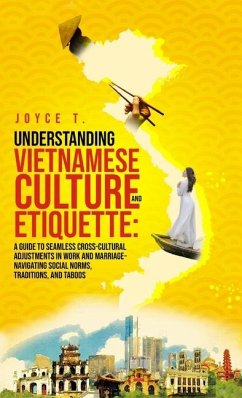
How the North Vietnamese Won the War
Versandkostenfrei!
Versandfertig in über 4 Wochen
27,99 €
inkl. MwSt.
Weitere Ausgaben:

PAYBACK Punkte
14 °P sammeln!
This monograph analyzes the effectiveness of operational campaign design against an asymmetrical threat during the 1968 Tet Offensive. The focus is on conceptual elements of campaign design that are derived from theory, which incorporate the particulars of military history to the general truth of warfare. Effective campaign execution is dependent, in part, on effective campaign design that set of theoretical and doctrinal precepts that define the concerns of the operational planner. The monograph identifies lessons learned from this period that are applicable to current U.S. Joint and Army doc...
This monograph analyzes the effectiveness of operational campaign design against an asymmetrical threat during the 1968 Tet Offensive. The focus is on conceptual elements of campaign design that are derived from theory, which incorporate the particulars of military history to the general truth of warfare. Effective campaign execution is dependent, in part, on effective campaign design that set of theoretical and doctrinal precepts that define the concerns of the operational planner. The monograph identifies lessons learned from this period that are applicable to current U.S. Joint and Army doctrine as well as lessons for planners and executors of U.S. military action under the American system of civilian control of the military. First, the monograph demonstrated the complex nature of asymmetric warfare. Finding and creating vulnerabilities and attacking those vulnerabilities with inherent strengths is the key to asymmetric warfare. Secondly, the monograph discussed the elements of campaign design that are derived from theory, which incorporate the particulars of military history to the general truth of warfare. Some of the more common conceptual actions are to understand the type and scope of conflict, define the enemy and friendly center of gravity, identify possible culminating points, select lines of operation, determine decisive points, and understanding the dangers of paralysis commonly known as cybershock. The third section identifies the strategy and identifies particular military objectives identified by the North Vietnamese. The monograph offered three different assessments. The first assessment was how the U.S. was an asymmetric threat to the PAVN and Vietcong. This assessment was based of strategic asymmetry using the forms of asymmetry that are method, will, and patience. The method that both opponents selected to fight the war is what caused the U.S. to be asymmetric to the PAVN and Vietcong. The second assessment was an assessment of the Tet Offensive This work has been selected by scholars as being culturally important, and is part of the knowledge base of civilization as we know it. This work was reproduced from the original artifact, and remains as true to the original work as possible. Therefore, you will see the original copyright references, library stamps (as most of these works have been housed in our most important libraries around the world), and other notations in the work. This work is in the public domain in the United States of America, and possibly other nations. Within the United States, you may freely copy and distribute this work, as no entity (individual or corporate) has a copyright on the body of the work. As a reproduction of a historical artifact, this work may contain missing or blurred pages, poor pictures, errant marks, etc. Scholars believe, and we concur, that this work is important enough to be preserved, reproduced, and made generally available to the public. We appreciate your support of the preservation process, and thank you for being an important part of keeping this knowledge alive and relevant.












